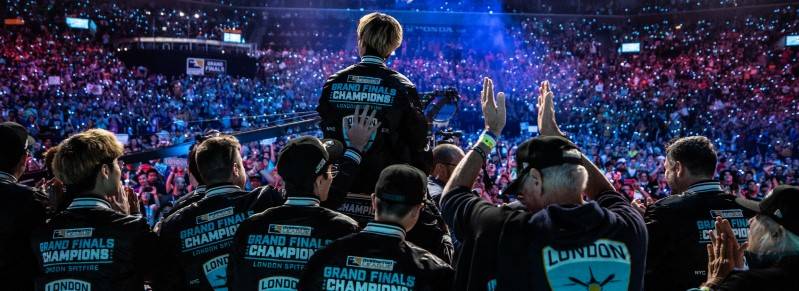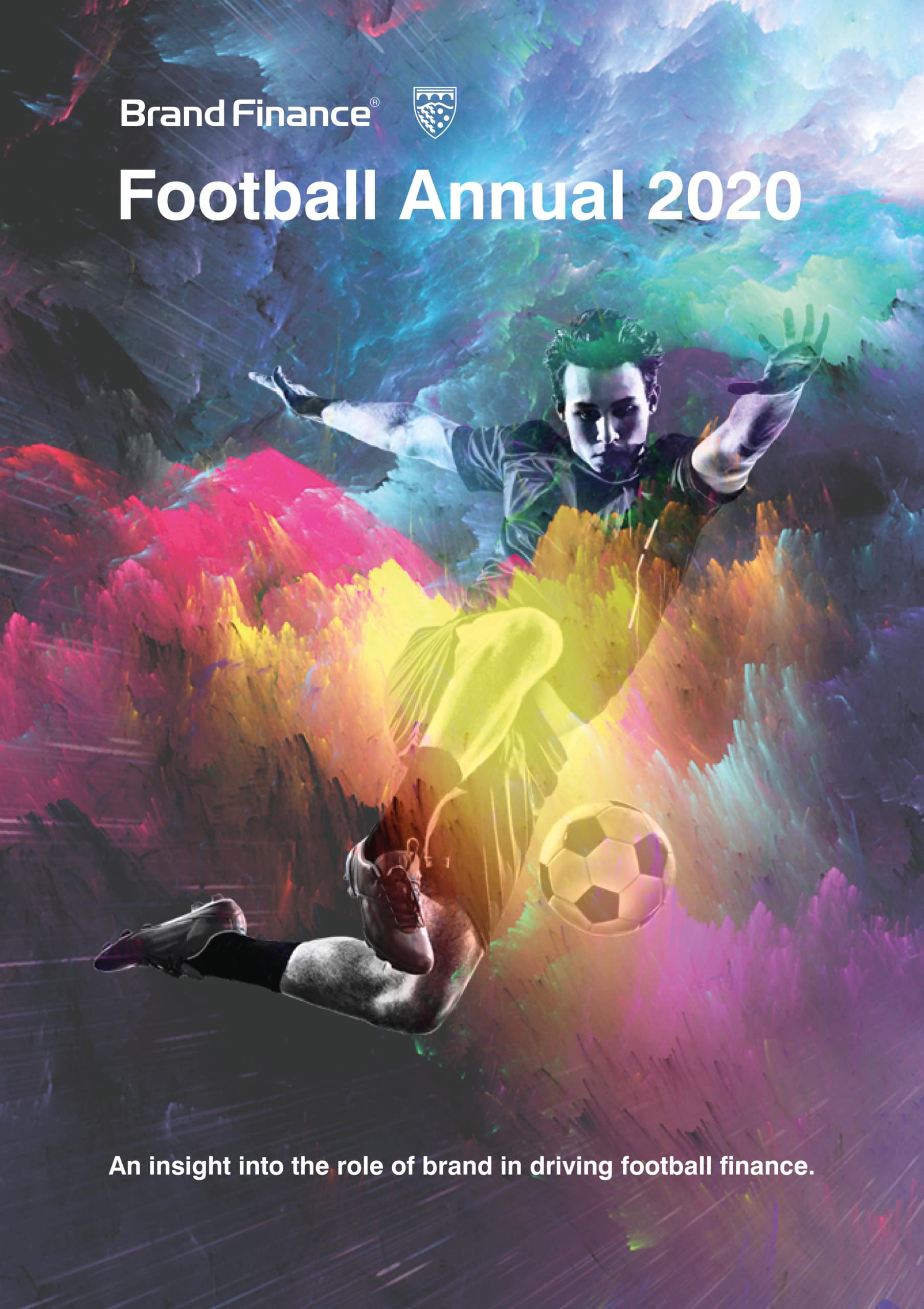This article was previously published in the Brand Finance Football Annual 2020.
When bubbles burst or an industry takes a different direction, it is either as a result of changing trends or a major setback to the economy. If top-level football has been on a growth trajectory that was difficult to sustain, with broadcasting fees climbing exponentially by the year, then coronavirus may just be the catalyst for a re-setting of the landscape.
There is little doubt the rise of broadcasting has been one of the driving forces behind the spectacular growth of football across Europe’s top leagues. The reliance on lucrative media income has boosted club revenues beyond all recognition, but it has also encouraged spiralling wages, huge transfer fees, and a growth in the intermediary expenditure by clubs, notably around the timing and construct of player contracts. In short, media income has had a dramatic and, some might say, reality-distorting impact on football at the highest level.

All Stood Still
The virus stopped football in its tracks, little surprise given a mass crowd in a stadium represents ideal conditions for contagion. However, broadcasters, most of whom were in the middle of screening deals, were deprived of the product they had already paid for.
Furthermore, when the game returned in stadiums with no fans, the product was, to a certain extent, compromised. It was football, but not in the shape or form that broadcasters envisaged. The appeal of leagues like the English Premier is not only based on the quality of football, but also the sight and sounds of people creating an atmosphere.
Understandably, there is much uncertainty about the future of broadcasting, not least because the enforced absence from TV screens has opened up new opportunities and also underlined the importance of the digital offering. Will broadcasters be so willing to agree on huge rights deals in the near future? And for those who are mid-cycle, will they seek an adjustment of their existing deals?
Much will depend on how long the crisis remains in its current state and also how populations react to the lifting of restrictions. There is a possibility the virus may change behaviour around public spaces with huge numbers of people.
Life may get back to some form of normality, but it will have significant terms and conditions. Hence, the sight of a 50,000 crowd may not be allowed in the short-to-medium term. Broadcasters may just consider the football they tendered for has lost some of its value. The impact on major football clubs could be damaging, or at the very least, the catalyst for seismic transformation.
For example, the top five leagues in Europe have contrasting dependencies on broadcasting cash – the Premier League’s revenues are almost 59% derived from media, the highest of them all. The Bundesliga, which has good commercial income, gets around 39% from broadcasters, Serie A 57.5%, Ligue 1 47.7%, and LaLiga 53.2%. They are all, arguably, too high.
Diminished Appeal?
There are signs that TV companies’ appetite may be waning a little, although revenues will surely remain high for some time to come. The Bundesliga recently agreed on its next deal for four years from 2021- 22 and had to settle for €200 million less than its previous agreement.
Serie A’s next deal is in negotiation but is yet to be settled. The Italian league has received a setback in that BeIn, the Qatari broadcaster, is considering its relationship with them because of Serie A’s relationship with Saudi Arabia, a country where “industrial-scale broadcasting piracy” exists.
The Premier’s last deal, struck for the 2019-2022 cycle, actually resulted in a lower figure per game, falling to €9.3 million from over €10 million, but the league is still way ahead of its peer group. Nevertheless, leagues are still gaining new partners, such as Ligue 1, which will benefit from a deal between the Chinese-Spanish-owned MediaPro and TF1 for Ligue 1 and 2 games.
The influence of broadcasters is very evident here, though, as Ligue 1 will change kick-off times to suit their new-found Chinese audience. The virus has sparked-off a wave of innovation in terms of league and club digital offerings.
LaLiga, for instance, launched a videogame tournament. There is an argument that digital content will accelerate in the aftermath of the global lockdown. Technology has certainly started to shape and inform the culture of fandom, especially in developing markets where personal contact with clubs in Europe is difficult.
Broadcasters have more competition as fan groups create new channels in which to connect. A good case is Arsenal fans’ AFTV, which has an average viewership greater than the capacity of the Emirates Stadium. The growth of over-the-top (OTT) transmission also introduces another dimension, such as Amazon Prime which screened a cluster of Premier League games in 2019-20.
Interestingly, Amazon saw football as a customer acquisition tool rather than customer retention. Football industry figures have been calling for a change to the distribution of rights model and also believe there is a discrepancy between the demand for games and the way the content is distributed in terms of pricing, the platforms, and the technology. According to some experts, the game is still overfocused on pay-TV as the only way to distribute and leverage content. High subscription fees encourage piracy which is taking billions of euros away from the sport.
Golden Egg
In the current climate, broadcasters might be within their rights to ask for a rebate on monies paid, but so far the momentum has been relatively muted. SKY has attempted to help clubs by deferring a rebate until 2021-22. The biggest clubs may not feel the pain of lower broadcasting revenues, but there is no question that the income from TV is the golden ticket for football.
In some cases, it has allowed modest clubs to gain membership to the top 30 in European football – the Premier League is a prime beneficiary in this context. In 15 years, Manchester United’s media income has risen by 380%, while Liverpool’s has grown by almost 400%. Some clubs have such a reliance on broadcasting that it makes them vulnerable to a major slump.
Top clubs such as Real Madrid (32%), Manchester United (29%), Barcelona (38%), and Liverpool (42%), have more diverse revenue streams, but smaller clubs can be hugely exposed. Napoli and Everton derive more than 70% of their revenues from media, while AFC Bournemouth has a massive 87% dependency. Although the media revenues make kings out of paupers, it also creates a world that is hard to leave. Hence, relegation from the Premier League is seen as a catastrophe by some club chairmen, even though so-called parachute payments soften the blow.
It can also encourage speculative, and sometimes profligate, spending on the part of lower league clubs wishing to benefit from lucrative TV money. As with many aspects of everyday life, coronavirus has prompted many questions about what is necessary and what is driven by materialism and consumerism. Football is no different - we know broadcasting revenues are vital but have they also made clubs lack-lustre in driving other forms of revenue?
Watch our webinar to learn more about the most valuable football brands of 2020.
Brand Finance Football Annual 2020
What are the world's most valuable football brands? The 150-page-long second edition of the Annual provides in-depth analysis of brand and enterprise values, sponsorship effectiveness, league reputation, stadia performance, and the role of Esports.

